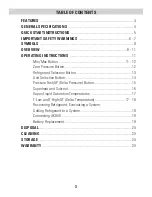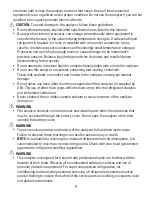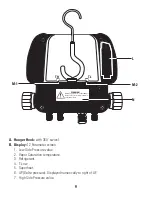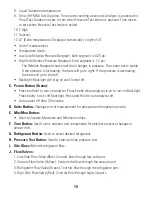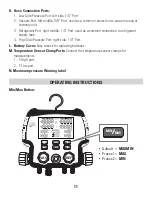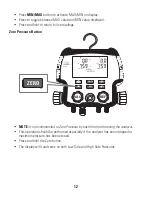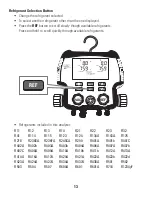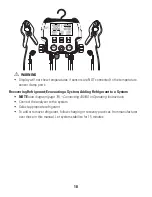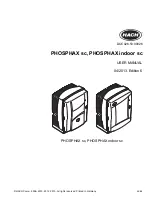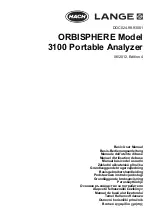
7
electrical path across the analyzer and over wet hoses. Keep all interconnected
equipment clean, organized and in proper condition. Do not use the analyzer if you are not
qualified to recognize potential electrical faults.
CAUTION
: To avoid damage to the analyzer, follow these guidelines:
• Do not allow pressures beyond what specifications are listed in this manual.
• Be aware that internal pressures can change unintentionally when equipment is
stored with pressure in the system during temperature changes. If subcooled liquid
refrigerant is trapped in a hose or manifold with no room for expansion, it may
result in dramatic pressure variations with seemingly small temperature changes.
Pressures can reach high enough levels to cause damage to the instrument’s
pressure sensors. Release liquid refrigerant from the hoses and manifold when
disconnecting from a system.
• Do not attempt to introduce liquid or samples heavily laden with oil into the analyzer.
• Do not use this analyzer on systems containing leak sealing chemicals.
These leak sealants can collect and harden in the analyzer, causing permanent
damage.
• Do not utilize any hose other than those supplied with the analyzer (or supplied by
UEi). The use of other hose types will introduce errors into the refrigerant analysis
and instrument calibration.
• Never obstruct the air intake, sample exhaust or case vent ports of the analyzer
during use.
WARNING
• The analyzer contains no internal user-serviceable parts other than batteries that
may be accessed through the battery cover. Do not open the analyzer other than
opening the battery cover.
WARNING
• To ensure safe operation and service of the analyzer, follow these instructions.
Failure to observe these warnings can result in severe injury or death.
•
NOTE:
It is unlawful to discharge or exhaust refrigerants into the atmosphere. It is
recommended to recycle or recover refrigerants. Check with your local government
agencies for refrigerant handling regulations.
WARNING
• This analyzer is designed for trained trade professionals who are familiar with the
hazards of their trade. Observe all recommended safety procedures and use of
personal protective equipment. For vapor compression refrigeration, air
conditioning and heat pump systems; servicing of refrigeration systems requires
special training to ensure the safety of the service person, building, occupants, local
and global environments.


